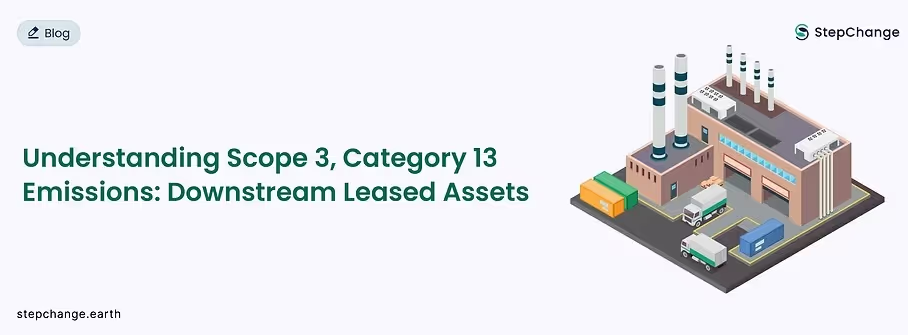
Solutions
Carbon Management
ESG Intelligence
Climate & Nature Risk
Data Registry
Beta
Sector
Get started, schedule a demo or request a free assessment!


The Greenhouse Gas Protocol categorizes emissions into three scopes: Scope 1 (direct emissions), Scope 2 (indirect emissions from purchased energy), and Scope 3 (all other indirect emissions).
Among the 15 categories of Scope 3 emissions, Category 13: Downstream Leased Assets focuses on emissions from assets owned by a company but leased to others. This blog explores the significance of Category 13 emissions, their calculation, and their impact on various industries.
Scope 3 emissions encompass all indirect greenhouse gas emissions that occur in a company's value chain but are not under its direct operational control. These emissions are divided into upstream and downstream categories, with downstream emissions including activities such as the use of sold products and leased assets.
Category 13 emissions arise from the operation of assets owned by a company (acting as lessor) and leased to other entities. These emissions are considered indirect because the lessor does not control how the assets are used. Examples include:
In the real estate sector, Scope 3, Category 13 emissions arise from assets leased to other organizations, such as commercial buildings or office spaces. These emissions are considered indirect because the lessor does not control how the assets are used.
Category 13 emissions in real estate primarily come from the energy consumption of leased buildings. This includes electricity, heating, cooling, and other energy uses by tenants. For instance, a property management company leasing office spaces would account for emissions from energy use in those buildings under Category 13.
The complexities of measuring and managing these emissions stem from the need to assess tenant energy usage and the operational practices within leased properties. Additionally, regulatory pressures are increasing, compelling companies to report their Scope 3 emissions more transparently.
The potential solutions for the real estate industry are:
In the transportation sector, vehicle rental companies and logistics providers face significant Scope 3 emissions from leased vehicles. These emissions primarily result from fuel consumption during vehicle operation.
The industry struggles with the variability in fuel efficiency among different vehicle types and the difficulty in tracking actual usage data from lessees.
The transportation industry could consider the below for minimizing their scope 3 c ateogry 13 emissions:
Addressing Scope 3, Category 13 emissions is essential for various industries as they strive for sustainability and compliance with increasing regulatory demands. By implementing targeted solutions such as green leasing, fleet optimization, and collaborative programs with lessees, companies can significantly reduce their carbon footprint while enhancing their reputation as environmentally responsible organizations.
For organizations looking to start their journey with Scope 3 emissions, focusing on downstream leased assets is a strategic step toward comprehensive decarbonization.

.svg)